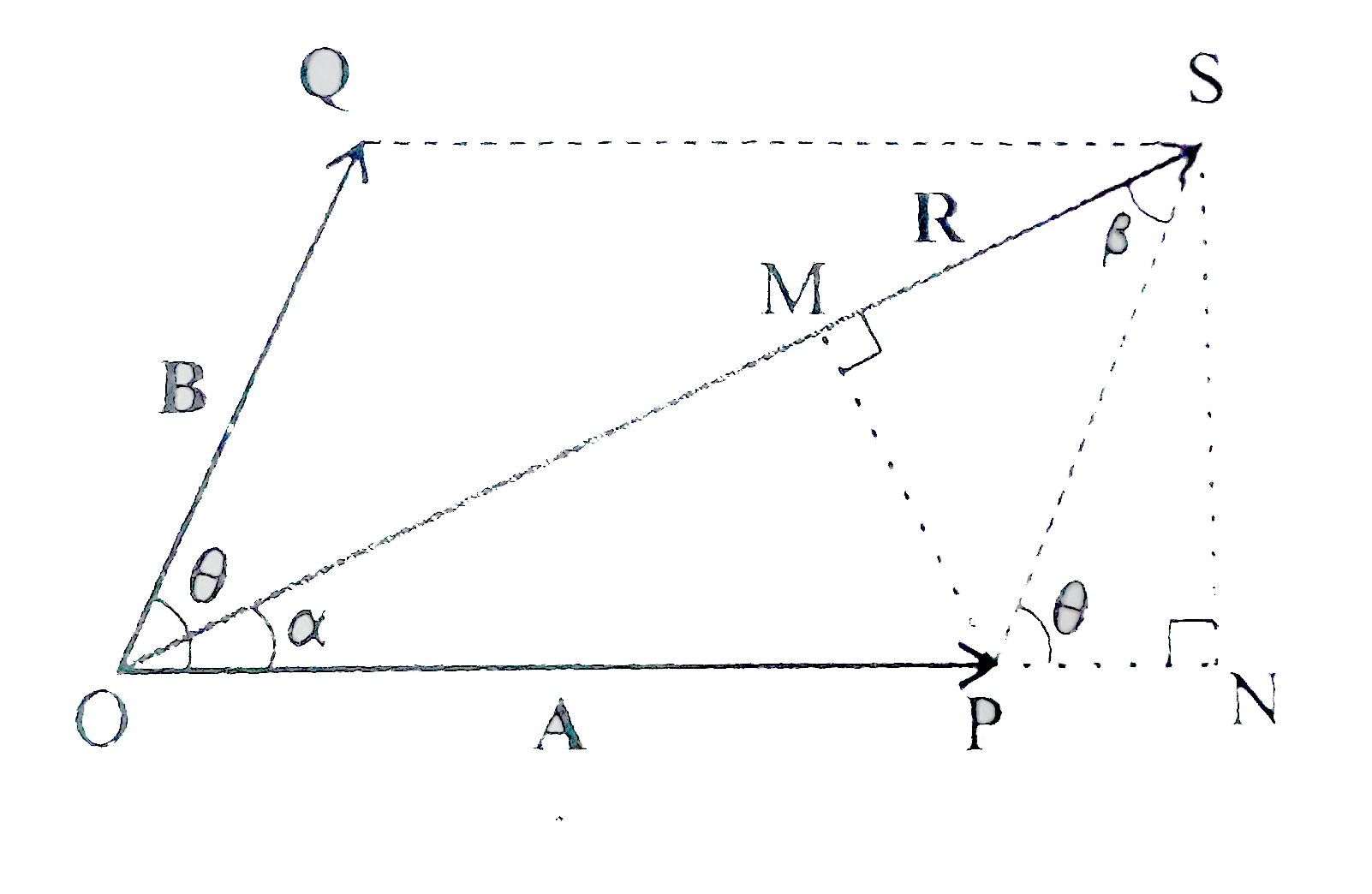Find the magnitude and direction of the resultant of two vectors A and B in terms of their magnitudes and angle θ between them .

Let OP and OQ represent two vectors A and B making an angle θ (Fig . 4.10) . Then , using the parallelogram method of vector addition , OS represents the resultant vector R:
R = A+B
SN is normal to OP and PM is normal to OS . From the geometry of the figure,
OS2=ON2+SN2
but ON=OP+PN=A+Bcosθ
SN=Bsinθ
OS2=(A+Bcosθ)2+(Bsinθ)2
or , R2=A2+B2+2ABcosθ
R=√A2+B2+2ABcosθ
In ΔOSNSN=OSsinα=Rsinα,and
in ΔPSN,SN=PSsinθ=Bsinθ
Therefore ,Rsinα=Bsinθ
or Rsinθ=Bsinα
similarly
PM=Asinα=Bsinβ
or Asinβ=Bsinα
or Combining Eqs . (4.24b) and (4.24c),we get
Rsinθ=Asinβ=Bsinα
Using Eq . (424a).
or , tanα=SNOP+PN=BsinθA+Bcosθ
Equation (4.24a) gives the magnitude of the resultant and Eqs . (4.24e) and (4.24f) its direction. Equantion (4.24a) is known as the Law of cosines and Eq . (4.24d) as the Law of sines.

Topper's Solved these Questions
- MOTION IN A PLANEBook:NCERT TELUGUChapter:MOTION IN A PLANEExercise:EXCERCISES
Explore 30 Videos
- MECHANICAL PROPERTIES OF SOLIDS Book:NCERT TELUGUChapter:MECHANICAL PROPERTIES OF SOLIDS Exercise:Exercises
Explore 21 Videos
- MOTION IN A STRAIGHT LINEBook:NCERT TELUGUChapter:MOTION IN A STRAIGHT LINEExercise:ADDITIONAL EXERCISES
Explore 5 Videos
Similar Questions
Find the magnitude and direction of the resultant of two vectors A and B in the terms of their magnitudes and angle θ between them.

View SolutionFind the magnitude and direction of the resultant of two vectors A and B in the terms of their magnitudes and angle θ between them.

View SolutionThe resultant of two vector A and B is at right angles to A and its magnitude is half of B. Find the angle between A and B.
View SolutionThe resultant of two vector A and B is at right angles to A and its magnitude is half of B. Find the angle between A and B.
View SolutionFind the magnitude of each of the two vectors →a and →b having the same magnitude such that the angle between them is 60∘ and their scalar product is 9/2.
View SolutionFind the magnitude of each of the two vectors →a and →b having the same magnitude such that the angle between them is 60∘ and their scalar product is 92.
View SolutionThe magnitude of the resultant of two vectors of magnitudes 5 and 3 is 2. What is the angle between the two vectors ?
View Solutionfind the resultant of two forces each having magnitude F0 and angle between them is θ.
View SolutionFind the magnitude of two vectors →a and →b having the same magnitude and such that the angle between them is 600 and their scalar product is .
View SolutionFind the magnitude of two vectors →aand →bhaving the same magnitude and such that the angle between them is 60∘and their scalar product is 12.
View Solution

